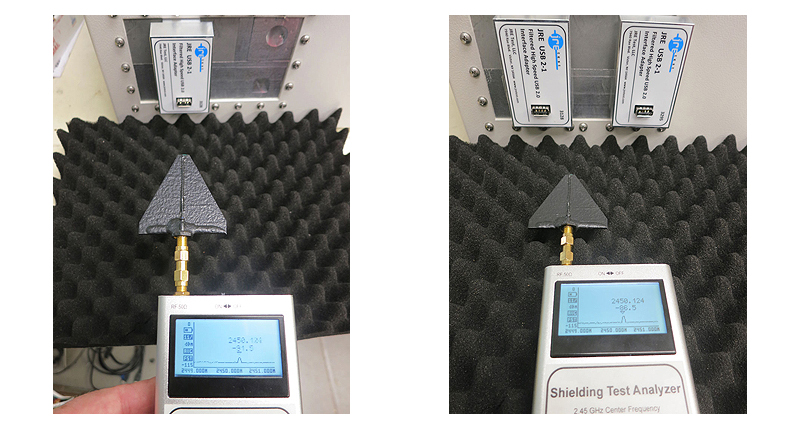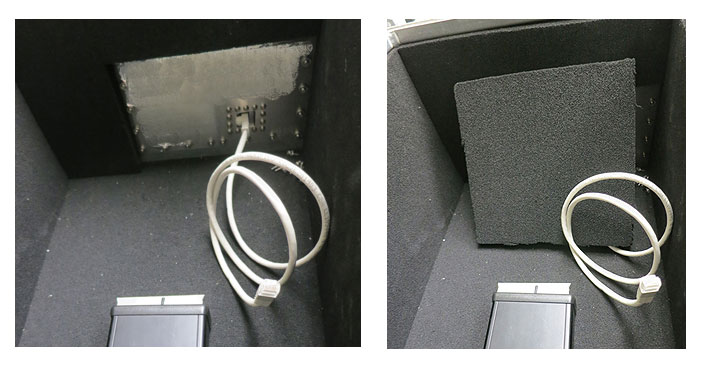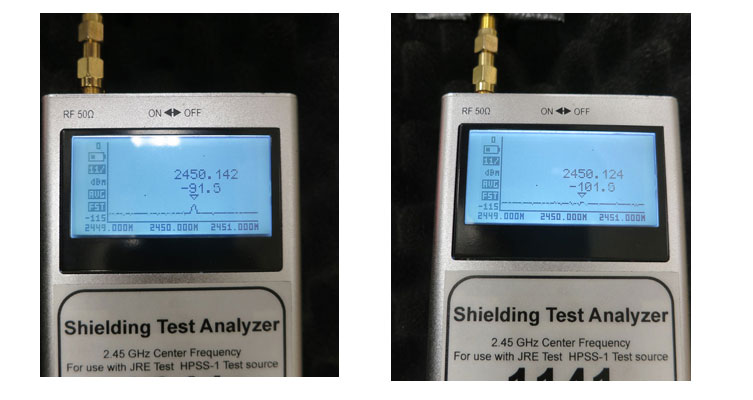Often times, in the quest for maximizing I/O capabilities in a test enclosure, one adds a large number of I/O filters and interfaces to the test enclosure. In this paper we will examine the potential sources of isolation degradation that may occur – especially when testing devices that utilize high order modulation formats such as GPS and higher data rate WiFi devices.
As the case in so many other complex technical issues, one needs to break down the seemingly overwhelming problem into small bite sized, easy to understand concepts. In this case we will refer back to the simple electrical circuit theory of resistors in parallel. In an electrical circuit, adding a resistor in parallel with another allows current to take an additional path, sort of like how adding an additional lane to a highway allows an additional path for traffic to flow. Its easy to see that adding more resistors in parallel will allow even more paths for the current (or traffic) to flow, thus reducing the overall resistance. Understanding this concept is the key to understanding how adding more I/O to an enclosure will degrade the isolation. Understand that this paper is intended to show the effects of adding additional I/O and some assumptions and simplifications were made in order to not get bogged down deep in technical details, the intention to make this subject understandable to the greatest number of readers.
You will note that each I/O device, whether a USB filter, Ethernet filter or even a filtered feed-through capacitor is specified with an isolation spec. This spec is the isolation one will experience when using that one filter, for example the JRE USB2-1 is spec’d at 80 dB up to 1 GHz. This means that by adding a JRE USB2-1 to a test enclosure, we can expect that the entire test enclosure system to have isolation of 80 dB, even though the ‘virgin’ test enclosure is spec’d at 100 dB. Clearly the test enclosure system isolation is only as good as the weakest link.

Now, what happens if we add an additional USB2-1 filter to the test enclosure? This will have the effect of adding another leakage path to the system, just like adding a resistor in parallel or another lane to a highway, the signal now has two paths to leak through rather than just one. So, what is the effect one can expect to see? With two paths, there will be twice the leakage power available and a doubling of power is equal to 3 dB, thus the isolation will now be 77 dB. Additional I/O filters and devices will follow the same rule, for every doubling of the number of I/O devices, the isolation drops another 3 dB – going from a single filter to four filters will degrade the isolation spec by 6 dB, from four filters to eight adds another 3 dB for a total of 9 dB. Here’s a handy chart that one can use to see the effect of adding more I/O:
Number of Degradation
I/O devices penalty in dB
2 3.0
3 4.8
4 6.0
5 7.0
6 7.8
8 9.0
10 10.0
12 10.8
16 12.0
24 13.8
48 16.8
I’d like to note that we are taking some liberties in this discussion, of course the RF frequency comes into play as such additional leakage may actually be beneficial if it is in the correct phase so as to cancel the leakage one would see in the total system configuration. Also, the specs we used on the filter example above is 80 dB while in actuality the spec is > 80 dB, but suffice to say that one must be aware that adding a large amount of I/O can degrade your final isolation spec. It is for this reason that JRE has designed easily changed out I/O plates so you do not have to populate an I/O plate with each and every conceivable I/O combination, while in actuality only a few I/O interfaces used at any particular time. Judicial choice of the I/O and quantity is needed in order to limit the potential for a severely degraded isolation situation. And that last sentence brings us to another topic, high order data modulation schemes that are incredibly robust.
High order modulation techniques
As mentioned at the beginning of this paper, high order modulation formats are being used increasingly for higher data speeds. Again, taking some liberties in simplification, we can discuss the impact of this on your testing. Early WiFi devices (802.11) used a simple modulation format that allowed a data rate of 2 Mbps using a 22 MHz bandwidth, over time better technology and silicon integration allowed faster speeds by making the signal much more complex by using higher level modulation formats, wider bandwidths and even multiple transmission paths. In effect, technology traded off bandwidth and complexity for faster speed and since the actual RF power permitted under regulatory agencies was fixed, the amount of ‘power per bit’ actually decreased tremendously.
So, how does this lower power per bit allow present day WiFi to work over a greater range than what we used to get in the early generations of WiFi? The answer is in the complex modulation format, where the data is spread out over a wide bandwidth, in many cases the signal power being lower than the ambient noise level, GPS being a prime example. The data appears to be spread across a wide bandwidth with the power at any one particular frequency being almost undetectable, but the ‘smarts’ in the receiver is able to discern the data signal from the noise. This is where the coding scheme is very powerful and produces what is known as processing gain. Modern receivers found in GPS, WiFi devices and such are actually very sensitive in being able to pull signals out of the noise due to this processing gain, most devices will operate with a signal as low as -85 dBm. What this means to you is that a test enclosure with a few I/O ports may have its isolation in the 75 to 80 dB range, but still that is not enough to prevent leakage of such a robust signal from entering the test enclosure. (A quick note on the RSSI or dBm signal strength readings that your device may be indicating. In many cases the algorithm used in the device will indicate a fairly strong signal while in actual data communication usage, the signal is not acting as strong as the signal strength showed. This signal strength is useful to see if a signal is there but please do not consider it an accurate indicator of the actual RF being continuously received since it is not measuring the RF power over a long period of time, but just the peak received on a few of the data packets.)
How does one mitigate this apparent leakage? Well, using the minimum amount of I/O devices is one way as well as careful placement of any external cables that are connected to the I/O panel. In many cases, moving an I/O cable a few cm will improve isolation enough to allow testing. Of course, the use of good quality shielded cables will help greatly, for example, the use of a shielded CAT-7 cable rather than a unshielded CAT-5 cable resulted in over 10 dB better isolation. Another very effective solution is to use additional absorber foam placed within the test enclosure near the I/O panel. In many cases, simply setting a loose piece of this foam will reduce leakage by over 10 dB. Contact JRE Test for additional foam pieces if needed.


Reducing leakage and improving isolation is often times more of an art than calculated engineering, when we are speaking of GHz signals and receivers capable of working at levels of -90 dBm and lower, one must be cognizant of each and every tiny piece of the total system – remember that having an isolation of 80 db is power difference of 100,000,000 times!

